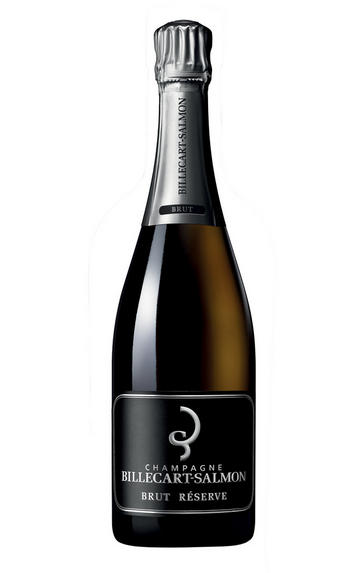
Champagne Billecart-Salmon, Réserve, Brut
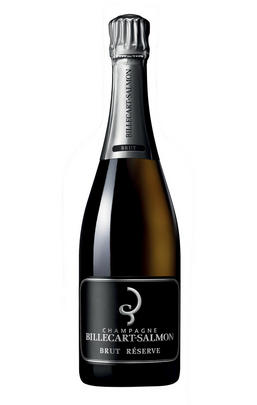
Critics reviews
The NV Brut Reserve is a tasty, non-vintage Champagne. Orchard fruit, lime, white flowers and white pepper. The Brut Reserve is a total charmer, silky, creamy, and exceptionally polished. All the elements are so well balanced. This release is based on 2019. Dosage is 6.10 grams per litre. Disgorged: 4th quarter 2022.
Mathieu Roland-Billecart has given his family’s Maison a much-needed kick in the rear end since taking over the reins in 2019. For years, Billecart-Salmon was a sleepy maison turning out gorgeous Champagnes at the top end but several undistinguished offerings at the lower level. Booking appointments or even getting a reply from the Maison was a challenge. That attitude was also pervasive at their US importer, T. Edward, because leadership, or lack of it, is a contagious force.
Things are remarkably different today. Roland-Billecart is young and dynamic, very much in touch with the modern world. Recent wines made under his tenure show more focus and quality than in the past because of greater selection and attention to detail. I was deeply impressed with what I tasted at the Maison during a recent visit and then more recently at my office in the US.
Drink 2023 - 2029
Antonio Galloni, Vinous.com (November 2023)
Base wine 2018, the blend that will last until September 2023. 40% Pinot Meunier, 30% Chardonnay, 30% Pinot Noir. 55% reserve wines. 4% barrel vinification. Dosage 6 g/l.
Lively lemon nose. Masses of acidity! Still very youthful. Still a little astringent at the end. Ambitious wine that ideally needs (even) more bottle age.
Drink 2024 - 2029
Jancis Robinson MW, JancisRobinson.com (June 2023)
Based on the 2018 vintage, with 55% of reserve wines, the NV Brut Réserve from Billecart-Salmon is a blend of 40% Pinot Meunier, 30% Chardonnay and 30% Pinot Noir, with a dosage of 6.2 grams per litre. It offers a bouquet with aromas of spring flowers, menthol, pastry, brioche, orchard fruits and pear.
Medium to full-bodied, the palate is moderately weighted, with a delicate mousse and a perfectly balanced texture. Very charming. It concludes with a saline, aromatic finish. It represents the first stage in the qualitative evolution of the house, initiated by Mathieu Roland-Billecart.
Drink 2023 - 2028
Yohan Castaing, Wine Advocate (April 2023)
Dried lemon, grapefruit, croissants and salted almonds here, with a flavorful palate. Creamy bubbles. Layered and delicious NV. 40% Pinot Meunier, 30% Chardonnay and 30% Pinot Noir.
Drink now
James Suckling, JamesSuckling.com (July 2022)
A fine straw-gold colour with great finesse of bubble flow and mousse. Joyful aromas of apple blossom and ripe pear. A full, defined palate demonstrates richness that will help to give this a long life in the cellar.
Drink now
Michael Edwards, Decanter.com
Disgorged late 2019. 9 grams per litre dosage. Origin number 161233.
The first wine tasted in a short vertical to highlight the evolution of the NV Champagne Brut over the past several years, this release is from the 2016 vintage and is composed of 44% Meunier and 28% each Pinot Noir and Chardonnay, with 64% reserve wine, with 4% cask ageing. Pouring a rich straw hue, it opens to generous and lightly toasty aromas of ripe red berries, caramel, and honeycomb.
Medium to full-bodied, it’s ripe, rounded, expressive, and approachable, although it feels the touch of dosage in its texture and the suggestion of sweetness. Its fruit is ripe and long on the palate, with a hint of walnut skin on the long finish. It is certainly the classic, old-school style, and compared to the other wines, it has a bit broader shoulders. Its toasty touch likely comes from the malolactic fermentation permitted instead of oak.
Drink 2023 - 2030
Audrey Frick, JebDunnuck.com (November 2023)
About this WINE
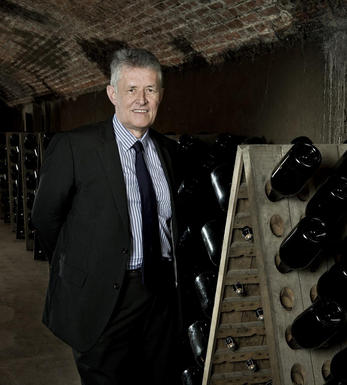
Champagne Billecart-Salmon
Champagne Billecart-Salmon was founded in 1818 in the village of Mareuil-sur-Aÿ near Epernay. It remains family-owned and run; Mathieu Roland-Billecart represents the seventh generation here, following in the footsteps of founders Nicolas-François Billecart and Elisabeth Salmon.
A family tasting committee meets weekly, joined by chef du cave Florent Nys. The eight-person panel includes three generations of the family, notably including Jean Roland-Billecart (who alone has over 75 vintages of experience). Not one cuvée is released until every member of the committee agrees on the blend.
Billecart-Salmon is a large Champagne House, with around 100 hectares of vines of its own. The process of organic conversion for the vineyards was started in 2019. The house also buys fruit from growers covering another 300 hectares of vines. Most of the fruit comes from the Champagne sub-regions of Montagne de Reims, Vallée de la Marne and Côte des Blancs.
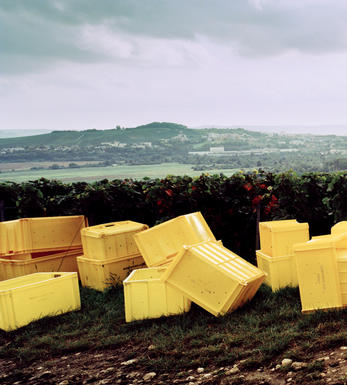
Brut Champagne
Brut denotes a dry style of Champagne (less than 15 grams per litre). Most Champagne is non-vintage, produced from a blend from different years. The non-vintage blend is always based predominately on wines made from the current harvest, enriched with aged wines (their proportion and age varies by brand) from earlier harvests, which impart an additional level of complexity to the end wine. Champagnes from a single vintage are labelled with the year reference and with the description Millésimé.
Non-vintage Champagnes can improve with short-term ageing (typically two to three years), while vintages can develop over much longer periods (five to 30 years). The most exquisite and often top-priced expression of a house’s style is referred to as Prestige Cuvée. Famous examples include Louis Roederer's Cristal, Moët & Chandon's Dom Pérignon, and Pol Roger's Cuvée Sir Winston Churchill.
Recommended Producers : Krug, Billecart Salmon, Pol Roger, Bollinger, Salon, Gosset, Pierre Péters, Ruinart
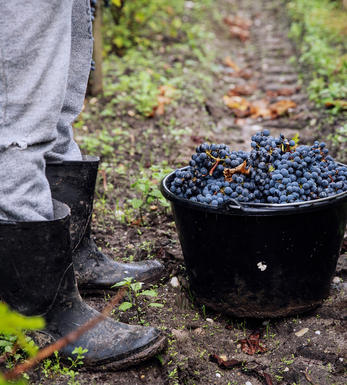
Champagne blend
Which grapes are included in the blend, and their proportion, is one of the key factors determining the style of most Champagnes. Three grapes are used - Pinot Noir, Chardonnay and Pinot Meunier.
26% of vineyards in Champagne are planted with Chardonnay and it performs best on the Côtes des Blancs and on the chalk slopes south of Epernay. It is relatively simple to grow, although it buds early and thus is susceptible to spring frosts. It produces lighter, fresher wines than those from Burgundy and gives finesse, fruit and elegance to the final blend. It is the sole grape in Blancs de Blancs, which are some of the richest long-lived Champagnes produced.
Pinot Noir accounts for nearly 40% of the plantings in Champagne and lies at the heart of most blends - it gives Champagne its body, structure, strength and grip. It is planted across Champagne and particularly so in the southern Aube district.
The final component is Pinot Meunier and this constitutes nearly 35% of the plantings. Its durability and resistance to spring frosts make the Marne Valley, a notorious frost pocket, its natural home. It ripens well in poor years and produces a soft, fruity style of wine that is ideal for blending with the more assertive flavours of Pinot Noir. Producers allege that Pinot Meunier lacks ageing potential, but this does not deter Krug from including around 15% of it in their final blends.


Buying options
Add to wishlist
Description
Disgorged late 2019. 9 grams per litre dosage. Origin number 161233.
The first wine tasted in a short vertical to highlight the evolution of the NV Champagne Brut over the past several years, this release is from the 2016 vintage and is composed of 44% Meunier and 28% each Pinot Noir and Chardonnay, with 64% reserve wine, with 4% cask ageing. Pouring a rich straw hue, it opens to generous and lightly toasty aromas of ripe red berries, caramel, and honeycomb.
Medium to full-bodied, it’s ripe, rounded, expressive, and approachable, although it feels the touch of dosage in its texture and the suggestion of sweetness. Its fruit is ripe and long on the palate, with a hint of walnut skin on the long finish. It is certainly the classic, old-school style, and compared to the other wines, it has a bit broader shoulders. Its toasty touch likely comes from the malolactic fermentation permitted instead of oak.
Drink 2023 - 2030
Audrey Frick, JebDunnuck.com (November 2023)
wine at a glance
Delivery and quality guarantee